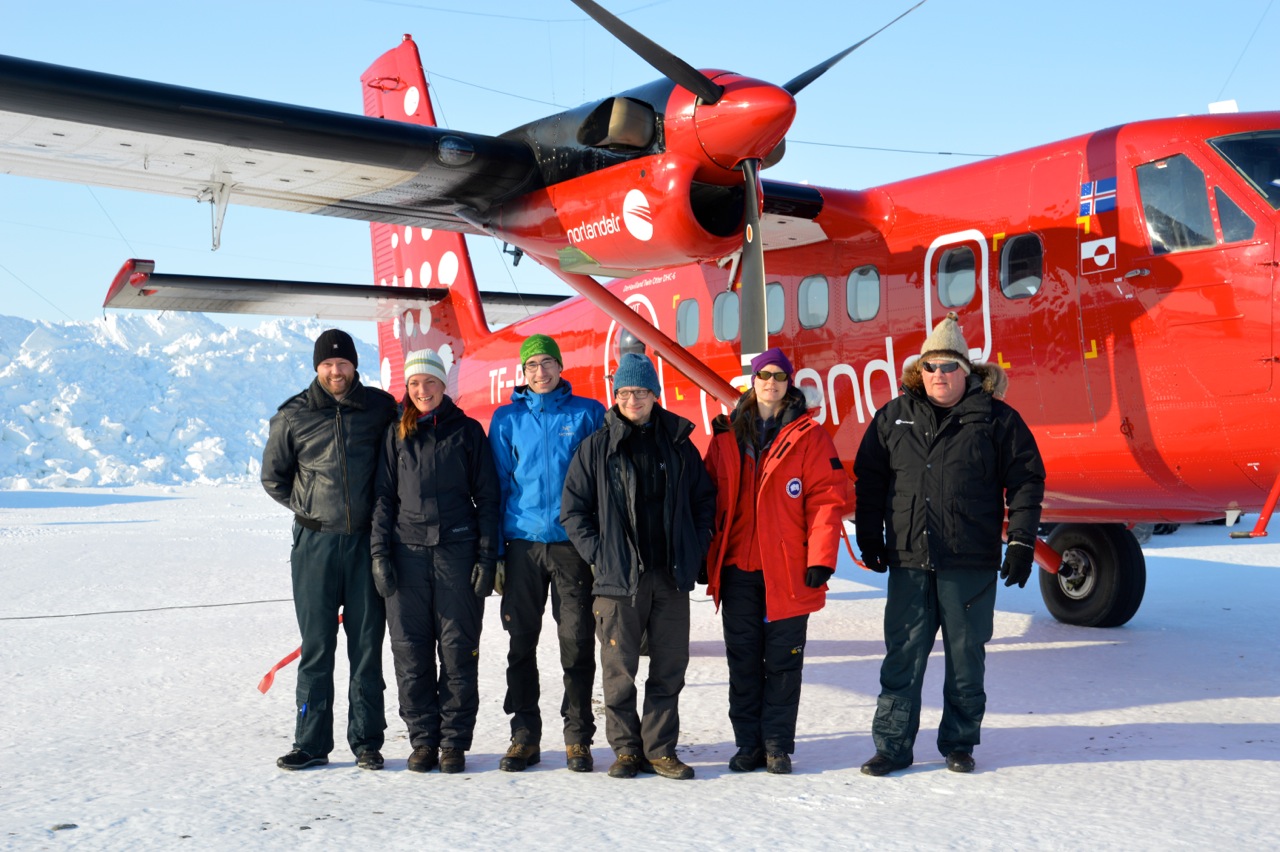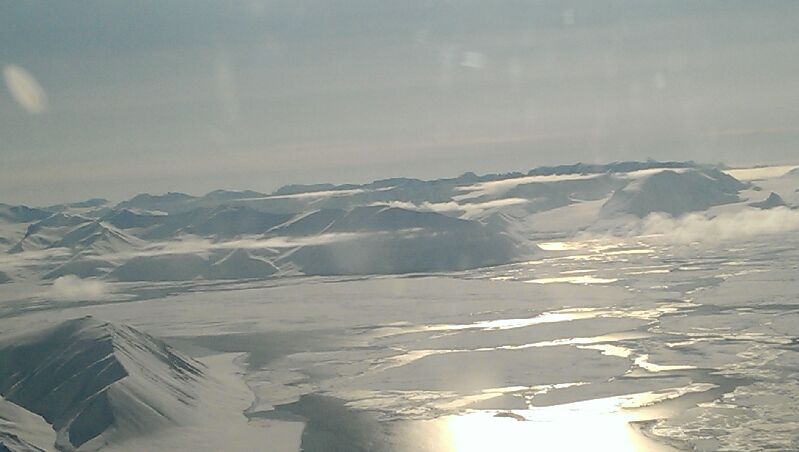The second part of the 2014 Cryovex campaign has started in Iceland.
Firstly, the instruments were re-installed in the ‘POF’ Twin Otter aircraft in its home-hangar in Akureyri , northern Iceland.
After a short test flight on Monday 28 April, we headed for Longyearbyen in Svalbard via east Greenland.
A short re-fuelling stop in Constable Point and a one-night stop in Danmarkshavn were necessary to reach Svalbard.
En-route we surveyed Bistrup Glacier close to the east Greenland coast and also the sea ice in Fram Strait at two sites with ‘upward looking sonar’ buoys that had been moored on the sea floor by the Norwegian Polar Institute.

The team at Danmarkshaven: Louise, Sebastian, Emil and Sine from DTU Space and pilots Ragnar and Eggert from Norlandair. (Credits: Christina Dybbøl Nielsen)
Patience has been needed since we arrived in Longyearbyen on Tuesday. Until now the weather has not been optimal for flying over one of our key sites at Austfonna, in northeast Svalbard.
Each day we have been in close contact with the Norwegian ground team from the University of Oslo to get local weather updates.
Today, 2 May, it looked slightly better and we decided to fly out to the ice cap to look at it – with a backup plan to fly sea-ice tracks to the north.
The clouds over Austfonna were too low and heavy for surveying, so the backup plan kicked in!
Successful sea ice lines were surveyed and now we cross our fingers for the weather forecast to hold for tomorrow, which predicts improved conditions over Austfonna ….
Post from: Sine Munk Hvidegaard, DTU Space









Discussion: no comments